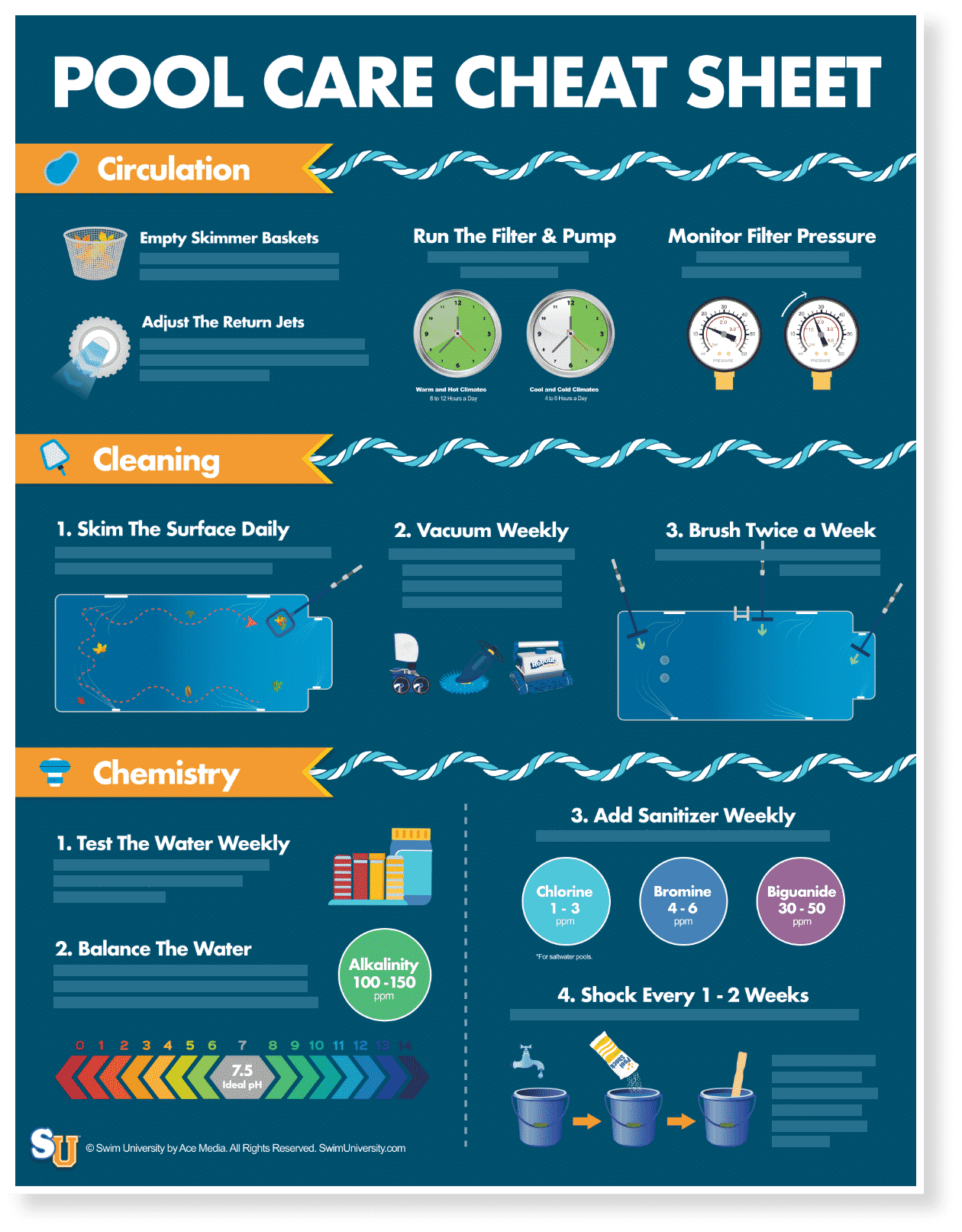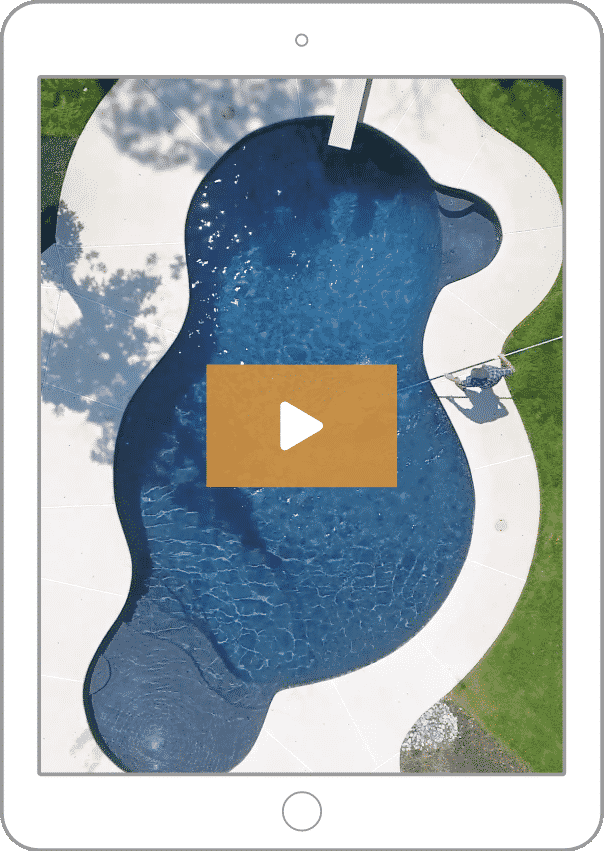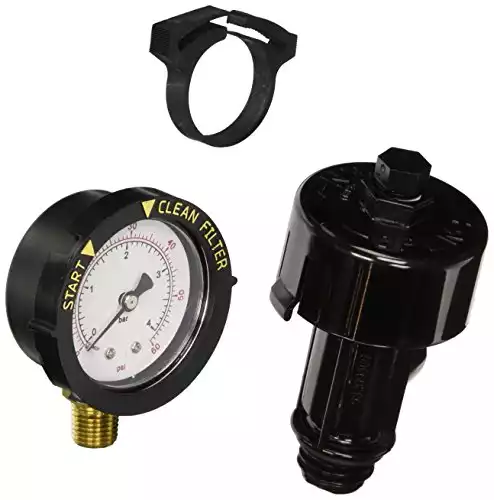It’s tiny, but not inconsequential. In fact, the pool filter pressure gauge is one of your most valuable pieces of equipment. Just like a check engine light, it alerts you to a potential problem before it gets out of hand. If you pay attention to it, that is.
Even if you’re closely watching those numbers rise and fall, what exactly do they mean? How do you know when there’s a problem, and how do you fix it? It’s all a lot easier than it may seem.
What Does a Pool Filter Pressure Gauge Do?
A pool filter requires a certain amount of pressure inside the tank to function. If that pressure gets too low or too high, the filter won’t work properly, and it can damage other equipment. The pool filter pressure gauge allows you to monitor the filter’s pressure to keep it at the right levels.
What Is a Pool Filter Pressure Gauge?
Your pool filter operates under pressure, which is measured in pounds per square inch (psi). When water is flowing through it normally, the filter’s pressure is normal.
But when something interferes with water flow—either increasing or decreasing it—the pressure inside the filter will change. The only way to monitor the pressure inside the filter is with a pool filter pressure gauge.
It’s attached to the top of your filter, and looks exactly the way you’d expect it to look. It’s a small dial with numbers around the perimeter, and an indicator “hand” that moves up or down the scale to indicate whether the pressure level is too low, too high, or just right.
But how do you know what those levels are?
What Is Normal Pool Filter Pressure?
The most important thing to know is that there’s not one magic number that’s normal for all pool filters. An average range can be anywhere from 10 psi to 25 psi.
What’s “normal” for a filter will depend on a few factors such as the filter’s size, the size and strength of your pump, and how clean—or dirty—the filter is at any given time.
But you can set a baseline number to consider normal for your filter. You’ll do this when you first install the filter, the media is clean, and all your other equipment—especially the pump—is running the way it should.
Once you’ve installed the filter and turned everything on, make a note of what the pool filter pressure gauge indicates. That will be the “normal” pressure level you strive to maintain.
Take a second baseline reading after the first time you clean or change the filter media. That number and the initial number will give you a range to shoot for.
Check the pool filter pressure gauge at least once a week as part of your regular pool maintenance routine. Be sure to record the number so you can easily see if and when pressure starts to rise or drop. This will let you know something’s wrong so you can troubleshoot.
Frustrated by adding chemicals and trying to keep your pool clear all the time?
We cut out all the confusion of pool maintenance in this easy-to-read illustrated ebook and video course. It'll help you save $100 right away on pool care!
Click Here to Learn MorePool Filter Pressure Too High: Troubleshooting And Fixes
When your pool filter pressure gauge starts to read higher than the normal range you established, it’s not necessarily a bad thing right off the bat. In fact, it can kind of be good.
It seems counterintuitive, but your filter is actually a little more effective when it’s dirty. Not filthy and completely clogged with dirt and debris, of course. But when it’s a little dirty, those particles of dirt, twigs, hair, and whatever else made its way into your pool can help grab even more dirty particles as they pass through the filter media.
So don’t feel you have to troubleshoot when you see the pool filter pressure gauge indicating a slight rise above normal.
Now, when the pressure in the filter gets to be 10 psi higher than your normal recorded pressure, it’s time to take action. Usually, this means you just have to clean your pool filter.
If cleaning the filter doesn’t bring the pressure level down, or the filter media is just beyond the point where cleaning will make a difference, it may be time to replace the media altogether.
Use the Air Relief Valve
The pool filter pressure gauge has a little buddy to help keep pressure levels steady and where they should be—an air relief valve.
The gauge may indicate high pressure due to air in the circulation system. This could happen if your pool’s water level is too low. It should be at about the midpoint of the skimmer.
Or maybe you turned the pool off while you were on vacation, or even just to clean it. When you start things back up, you may discover air in the system.
When water begins to flow through the system, it competes with air for space, which forces the air through the system. Left too long, it can damage your equipment, especially the pump which must contain water to function properly.
When you use the air relief valve to release the air from the system, the water can once again fill the plumbing the way it’s supposed to, your equipment will be safe, and the pool filter pressure gauge should go back down.
Pool Filter Pressure Too Low: Troubleshooting And Fixes
If the pool filter pressure gauge reads at least 5 psi lower than normal, it means water isn’t reaching the filter quickly enough, and you have a couple of possible problems to take care of.
The most common cause is a blockage located somewhere before the filter. Check the skimmers, pump basket, pump impeller, and drain covers for any debris that could be blocking circulation.
The less common and more serious cause for a low pool filter pressure gauge reading is a pool leak somewhere in the system, most likely the pool pump. Examine the pump carefully for any indications of a leak. If the pump is the problem, you have three options:
- Repair it yourself.
- Hire a pro to repair it.
- Replace the pump (if it’s beyond repair).
If nothing you try to either raise or lower the filter pressure is working, you have another option available to you.
Check the Pool Filter Pressure Gauge
Is the pool filter clean? No blockages anywhere? Everything running the way it should, but the pressure gauge still says something’s wrong? It might be a problem with the gauge itself.
Just like any other piece of equipment, the pool filter pressure gauge won’t last forever. It may be damaged somehow, or it could just wear out over time.
The good thing is, it’s not an expensive device. You can expect to spend less than $20 to replace the gauge.
Under Pressure
While a pool filter pressure gauge is a small part of a large system, it plays a vital role to the overall health of your pool. Remember to check it weekly, and when you see the numbers moving too far in either direction, address it immediately. Otherwise, you could end up with damaged equipment and expensive repairs or replacement down the road.
Happy Swimming!

Recommended Guides
Save money, clarify pool water, and keep your family safe from dangerous water-borne illnesses by changing pool filter sand yourself, quickly and easily.
What is this multiport valve thingy? Don't worry, it's not as complex as it looks. Once you learn about all those settings, you'll be in pool care heaven.
Need to backwash your pool filter? This step-by-step guide will help keep your filter running better and your pool water clear.
Do you know how to clean a pool filter? Are you sure? Get crystal clear, pristine pool water by keeping any type of filter clean with a few easy methods.


